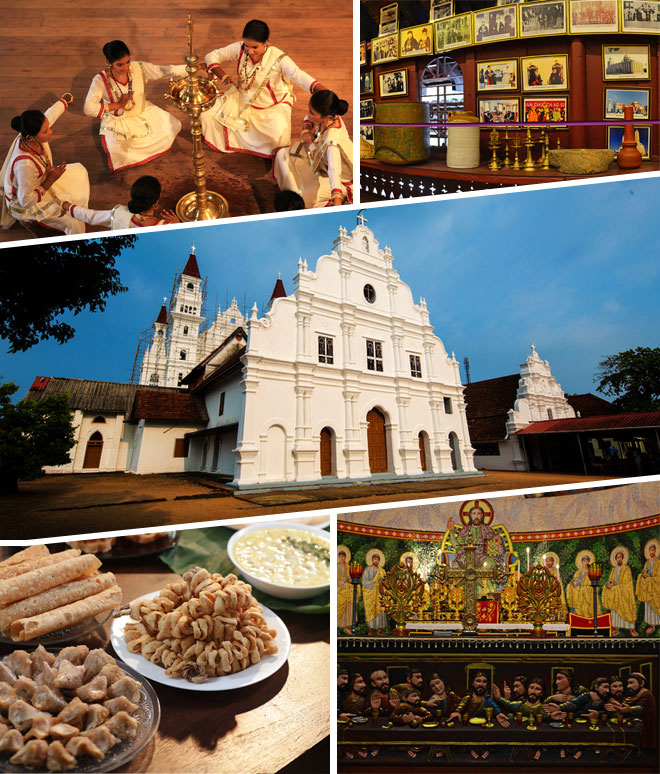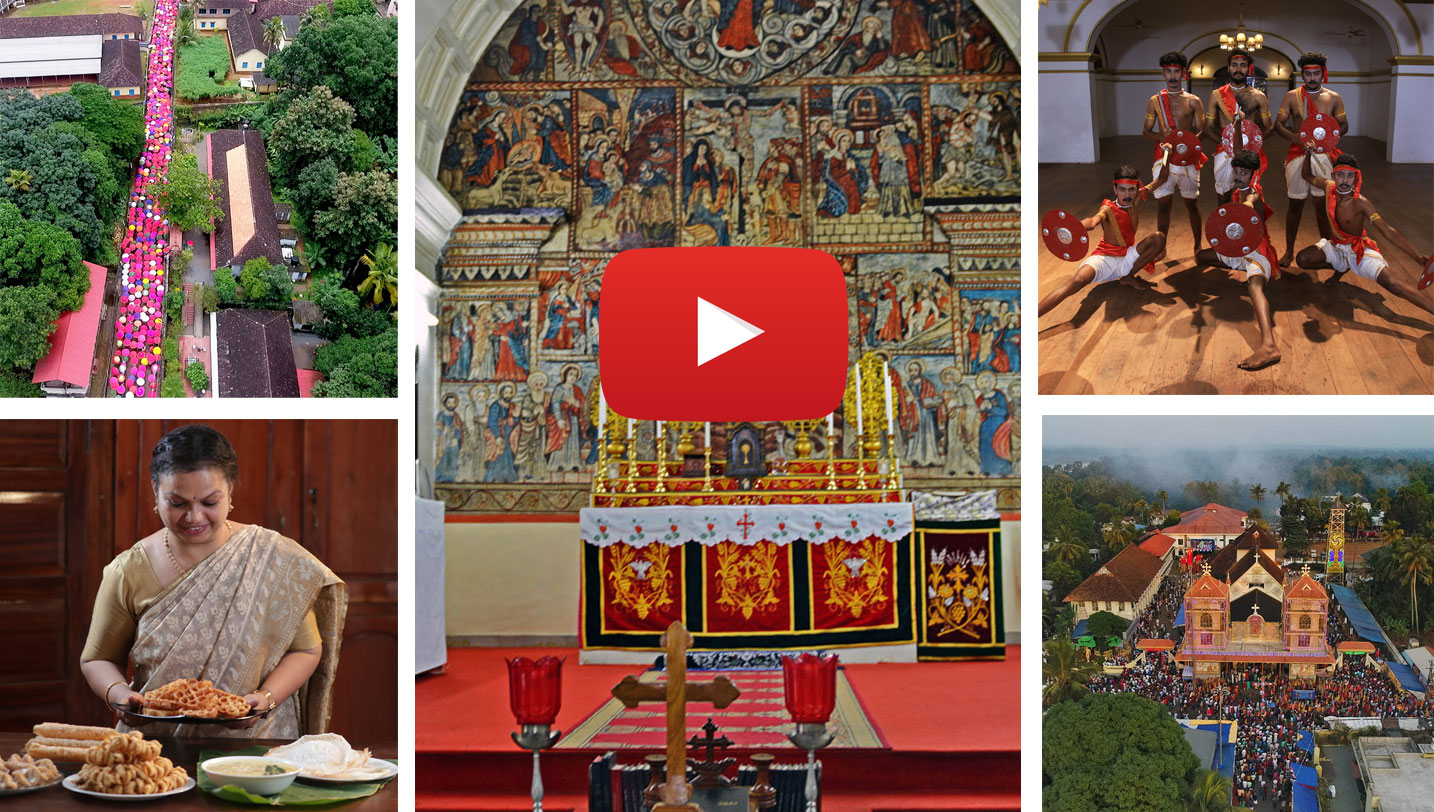Latinization of Churches
_large.jpg)
Latinization of St. Thomas Church
The Christian Church of India is a mother church founded during the time of the Apostles of Christ. As in the case of Rome or Antioch, the church was led by Bishops who were appointed by Patriarchs. Archdeacons led the believers using the interactions during the public meetings within the churches. They followed the Eastern liturgy based on the Testament of St. Thomas. The Portuguese missionaries came across in Kerala this traditional sect with a long history and a rich heritage, having their own peculiar customs, language and mode of worship.
The main intention of Latinization was to take absolute control of the pepper trade and also of the pepper farmers. The visit of Menezes to the main pepper trading centers before the Synod of Diamper at Udayamperoor is significant. Historians say that the Nasranis distanced themselves from the Portuguese after the Synod of Diamper at Udayamperoor. Following the visit of Bishop Menezes after the Synod, a new trade link was established on the Atlantic Ocean. The helpless people had to yield to it. Total control of merchandise transfer thus reached the hands of the Portuguese.
_large.jpg)
Portuguese strategy:
Moves were afoot for the spiritual renaissance of the St. Thomas Christians and also to take over their spiritual leadership. The first move was the introduction of Latin rites. But the bid to force them to give up Syriac did not work. In CE 1601, Goa received a Papal Bull from Pope Clement VIII appointing Francis Ross as the Archbishop of Angamaly. This again, was a step aimed at bringing St.Thomas Christians under the Latin regime. Once the Portuguese gained control over the Persian Gulf, they were able to block the journey of Arab traders as well as of the Bishops from Mesopotamia. The Christians in Kerala were forced to break their ties with Persia. Bishops had to come to Kerala in disguise. Those who came under the protection of Rome were also imprisoned by the Portuguese.
At the same time, the Franciscan Churches came up in Kochi and Vypin Fort with Kodungalloor as the mission centre. Franciscans were much ahead of others in missionary activities. Dominicans and Jesuits also functioned in Kochi and Kollam under the protection of the Portuguese. Jesuits won the race in this score. The Portuguese were also encouraged to marry Kerala women. Portuguese family names became popular in the coastal areas and Kochi. Their children were known as Eurasians, Topasis and Anglo Indians. But they could not influence the St. Thomas Nasranis. It is as a result of Coventhas becoming popular that foreign names became popular in Kerala. They also popularized Latin Almanac and the biographies of their Saints. Coventhas and their seminaries were the promoters of modernization. They also introduced modern farming practices, and the concept Eco Christianity, which were practiced by the priests of the seminaries mainly in the plantations. Rev Fr. Kuriakose Elias was its main proponent.
_large.jpg)
The reforms in the Trent Council:
The Roman Church established its supremacy among the native churches only after and because the Portuguese established their colonies and successfully implemented there, a unique combination of trade and, missionary activities supporting Rome. Portugal implemented the reforms initiated by Rome on the strength of its being the colonial ruler. The nineteenth global synod that met at Trent, a small town on the Alpine border between Germany and Italy, during the time of Pope Paul III, is known as the Trent Synod. This synod was convened at a time when colonization was gaining strength under the tutelage of the Portuguese King, with the setting up of the dioceses in Kochi, Goa, Malacca and Macau. The Portuguese King started implementing the Trent Council reforms from 1564. He called upon the missionaries and rulers to make the colonies in Asia and Africa aware of the Trent Council decisions.
- The Tradition of St. Thomas
- The arrival of St. Thomas
- Seven and half Churches
- Post St. Thomas arrivals
- The scenario before the arrival of Gama
- Missionary Activities
- Descriptions of St. Thomas Christians
- The Padruodo
- Portuguese Forts
- Synod of Diamper
- Latinization of Churches
- Coonan Cross Oath
- Post Koonan Kurissu
- Establishment of churches
- Starting of Seminaries
- Anglo Indians
- Migrations to Malabar

